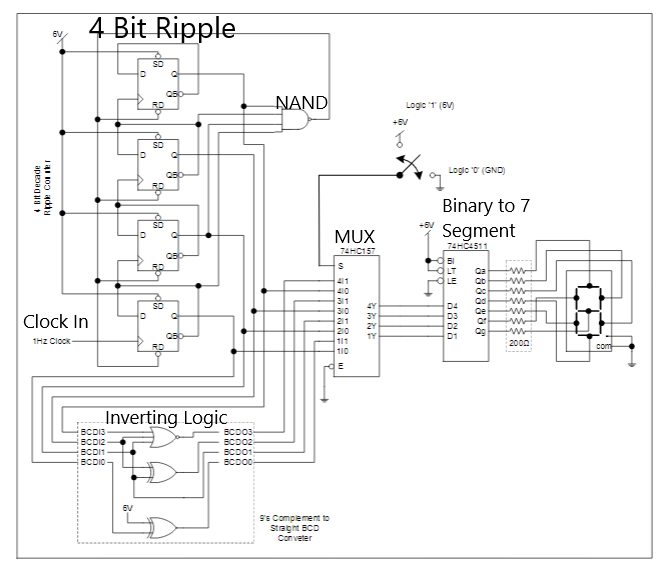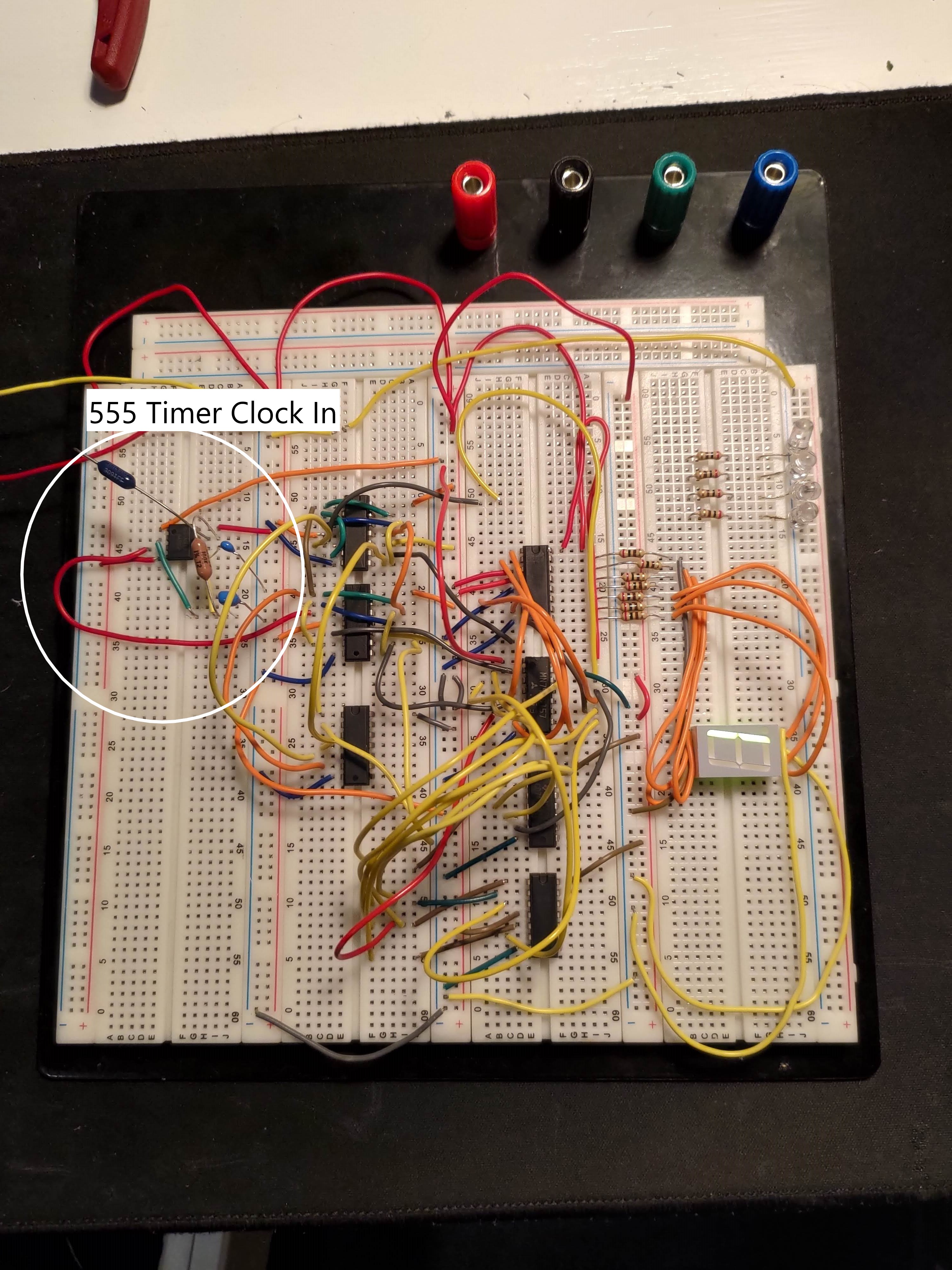Shown above is a 4 bit decade counter constructed on a breadboard. Designed and implemented using digital logic, the circuit starts with a 5v input signal into a 555 timer, highlighted in the image below, and a series of capacitors to charge and discharge at a rate of 1 tick per second (1Hz). We then send this signal into the 4 bit ripple counter.
In short, a ripple counter carries a signal through a series of latches. Each latch can hold either a binary 0 or 1 and can seen in the top left of the circuit diagram below. In effect, the 4 bits of the ripple counter transition from 0000->0001->0010->0011... and so on "rippling" the signal serially down the line. In decimal this count sequence is represented as 0->1->2->3.... This continues on up until a binary 1111 or until decimal number 15, giving us a count from 0 to 15 incrementing once per second from the clock.
This is pretty neat as is, but we want a decade counter from 0->9 so we need some way of resetting the count. Fortunately, each of our 4 latches comes with a reset pin that sets it's value back to 0. Essentially, we check if the value is a binary "10", and if it is, we have fully completed the cycle for 0->9 and need to trigger all the reset pins to restart the sequence back to "0000". This function is done by the NAND chip in the upper middle section of the diagram.
The next block of the circuit is the multiplexor or MUX sitting right in the middle of the diagram taking inputs from the ripple counter and the digital logic at the bottom of the diagram. The digital logic takes the value of the circuit and inverts it, so instead of counting from 0->9 we count down from 9->0.
For as cool a name as multiplexor, it's function is pretty simple. Given 2 sets of inputs it selects one or the other. In this case, the function of the MUX is to select between our count up sequence 0->9 or our count down sequence 9->0.
Finally, our count sequence is brought to the last component, the binary to 7 Segment display decoder. A 7 segment display is basically 7 led's in a figure 8, this particular IC, takes the binary count and converts the outputs into the correct orientation to turn on the led's corresponding to the decimal number we are at. Thus concluding our journey from a 5v connection, all the way to a board that counts almost as good as a kindergartener.

